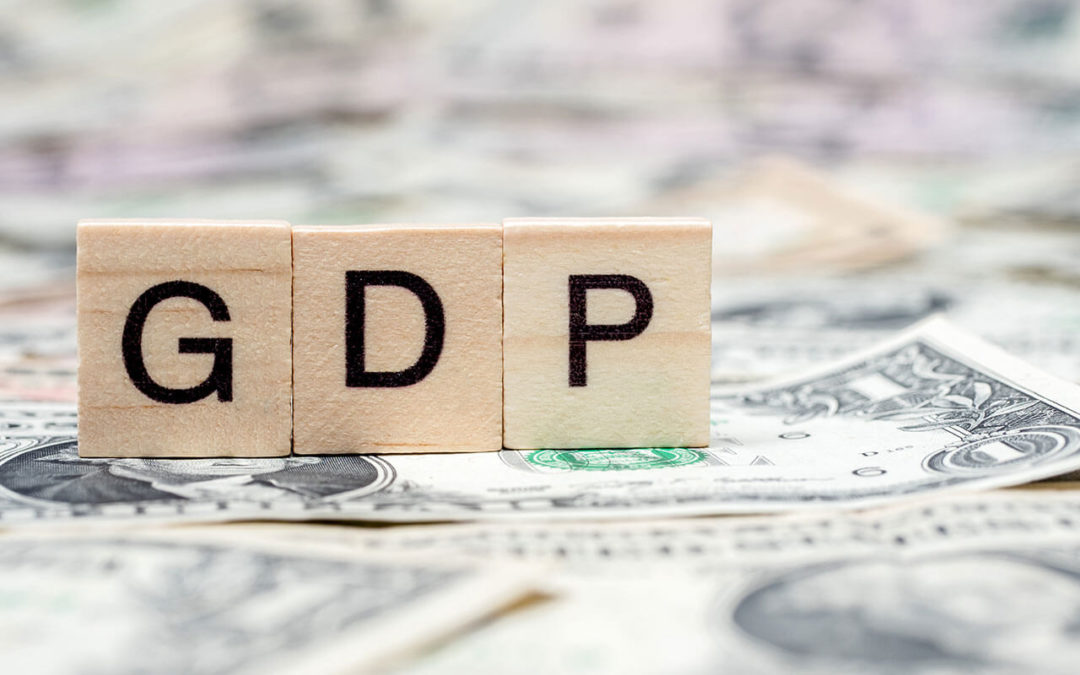Like any sector, economics is filled with various abbreviations and terms that can be difficult for the layperson to understand. Unlike many sectors, however, economics directly affects everyone. The state of the economy—locally, nationally, and worldwide—impacts every aspect of our daily lives.
To understand the complex nature of economics and finance it is vital to know some key terms and what they mean. One of the most important of these terms is gross domestic product (GDP).
What Is GDP, and How Is It Calculated?
GDP is, simply, the total monetary value of all the goods and services produced in a country over a defined period. That period is normally one year. The idea of GDP began in the 18th century, but it wasn’t until the Bretton Woods conference (a meeting of delegates from the Allied nations in World War II) in 1944 that it was adopted as a standard measuring tool as part of the overall organization of the post-war world economic system.
There are two types of GDP: nominal and real. Nominal GDP is the total face value of all goods and services, while real GDP is adjusted for inflation and is a more accurate look at how an economy is performing. GDP does not measure goods or services that are provided cost-free, like those done for family or friends as a favor, nor does it measure the black market or other criminal activity. In some cases, this extralegal activity can be significant, and thus the GDP of certain nations will not necessarily tell the entire story of their economic situation.
The value of GDP is that it gives a general overview of a nation’s economy, showing whether that economy is growing, shrinking, or staying the same. Year-by-year comparisons can illuminate the overall trends in a nation’s economic state.
GDP is calculated based on factors like total production, expenditure, and income. Using the expenditure method, GDP is calculated by adding private consumption, government and gross private investment, government spending, and total exports minus total imports. There is an international standard for GDP calculation, but each nation is responsible for determining its own GDP.
Positives and Negatives of GDP as an Economic Indicator
GDP can be used to compare two or more nations to determine their relative economic strength. However, because GDP is measured in a nation’s currency, comparisons between nations only work if each nation’s currency is equalized. This is often done by converting both nations’ currencies to a neutral currency, most often the United States dollar, using the current international exchange rate.
In general, GDP reflects the employment situation of the nation. A nation with a high GDP normally has a very high employment rate, as the demand for goods and services requires hiring more workers. Conversely, a low GDP tends to indicate a high unemployment rate, with lower demand requiring a smaller workforce. These are generalizations, however, and may not always be completely accurate.
While GDP is an excellent indicator of the economic status of a nation, there are many things that it does not say about a nation’s economy. At first, it might seem that a nation with a high GDP would be an excellent place to live. A booming economy and low unemployment look attractive to anyone. However, just looking at GDP does not tell the entire story. If a nation with a high GDP has a low per-capita GDP, it means that the nation’s tremendous wealth is unevenly distributed, with a small group possessing the majority of the nation’s resources.
This leads to a major criticism of GDP as an economic indicator. It does not necessarily reflect living conditions for the average citizen of a nation. Its emphasis on material wealth does not consider other important factors like environmental impact or life expectancy.
GDP also does not differentiate between useful and wasteful spending. A government that spends large sums of money on social and other programs contributes greatly to a nation’s GDP, but GDP does not reveal whether that spending is contributing to the well-being of the nation’s citizens. Many public projects do not achieve what they set out to do, but regardless, they are counted in total GDP.
Gross domestic product is a valuable tool for looking at the basic state of any nation’s economy. It is a fine basis for economic analysis, but it has certain flaws that must be considered when examining a country’s economy.

